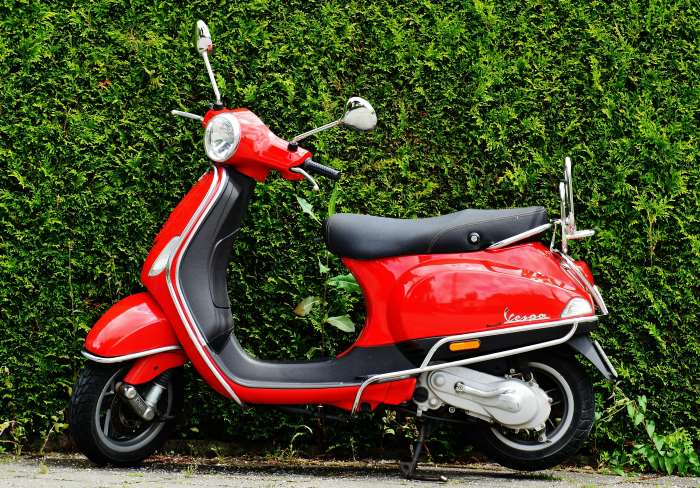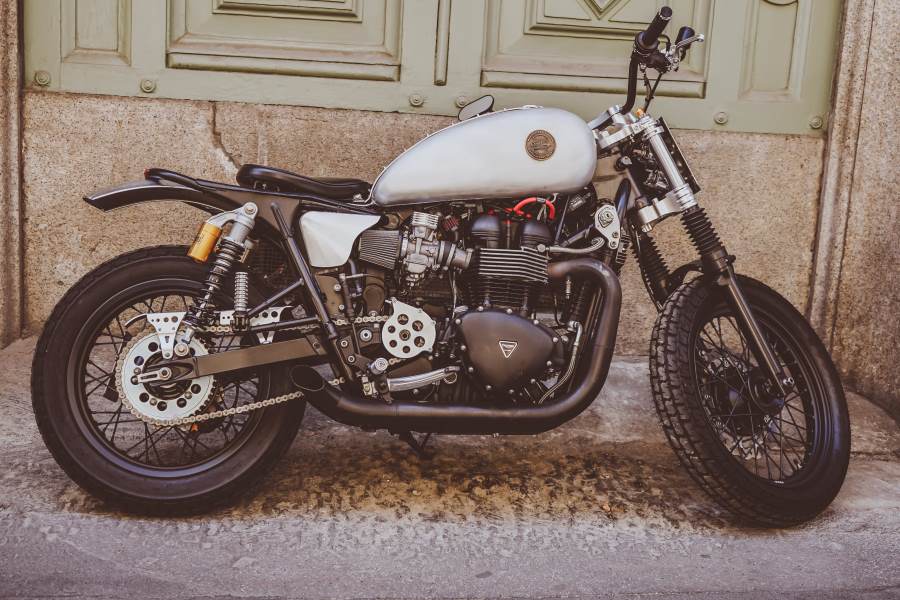9000+ Cashless Garages
3 Cr+ Policies Sold

9000+ Cashless Garages
3 Cr+ Policies Sold



Bike insurance Online, starting ₹752
It's a brand new Bike
If you are looking to buy a two-wheeler for your daily commute and don’t have preferences, this question has probably crossed your mind - ‘Motorcycle vs scooter - which one is better?’
Back in the 70s and 90s, ‘scooter’ or ‘scooty’ would have been the answer to this question.
However, since then, the stylish and faster bikes did not take much time to win people’s hearts. A change in scenario occurred again in the late 90s when scooters came back with brand new looks and features.
When you buy a bike or scooter in India, it is crucial to secure it with two-wheeler insurance, as mandated by the Motor Vehicles Act of 1988. It provides financial protection against accidents, theft and damage, safeguarding you and your investment.
Having two-wheeler insurance also saves you from hefty traffic fines, license suspension and even legal trouble.



When you want something more compact, easier to navigate, or bunched up in tight places—like crowded city streets—a scooter often is better than a bike. However, bikes may be more suitable for longer and rougher distances since they are more reliable and comfortable.
A scooter can sometimes be a better choice than a bike. Here is how:
Generally, scooters are lighter in weight compared to bikes. This factor makes them quite easy to control and navigate. This can be very beneficial for riders who are new or who find it difficult to handle heavy vehicles.
Scooters have simple controls and less complicated designs than bikes, so they are much faster to learn than bikes. With this, new riders can get comfortable riding much faster with reduced stress levels.
Scooters are stable at low speeds and can more easily navigate narrow places. At the same time, their compact size also allows them to fit into tighter parking spots, making urban parking easier.
The normal speed for scooters is slower; thus, the risks of hard falls are lower compared to higher-speed bikes. This makes them a much safer option for everyday use, especially in city environments.
Most scooters come fitted with built-in storage spaces or compartments, some of which include under-seat storage or small front baskets. This allows riders to move around with their everyday stuff, like groceries or personal items.
Their compact size and ease of use make them perfect for daily short trips. They work best for running quick errands or short commutes requiring a manageable amount of parking and storage spaces.
In most cases, scooter insurance premiums are less than those for bikes because scooters run at a slower speed, and the risk of major accidents is lower. This can save scooter owners a fair amount of money over time.
Generally, a scooter has fewer moving parts and fewer mechanisms than a bike; this makes it less costly in terms of maintenance and repair. Routine maintenance is also cheaper, making scooters the more economical choice in the long run.

Despite scooters having so many perks, bikes have several reasons to be chosen over them. Below are some of the advantages of motorcycles:
Bikes give better fuel mileage than scooters so you can go further on several litres of fuel. This happens because their engines are more refined, and fuel consumption is better.
Having bigger fuel tanks and longer wheelbases, bikes are more suitable for long trips. This provides better comfort and stability over larger distances than a scooter.
With bigger tanks, bikes should be refuelled less often on long journeys. This facility is especially useful in long rides where frequent petrol pumps are unavailable.
Generally, bikes have bigger engines with higher displacement; thus, they can deliver more power and torque. This ensures better acceleration and overall performance for varied riding conditions.
Motorcycles have more wheel stability at high speed and are more suited to rough or uneven terrain. They have been designed with large wheels and suspension systems that provide better stability and control.
Motorcycles mostly have better acceleration, higher top speeds, and much smoother engine operation. They feature advanced engines with much-refined mechanics that render better performance overall.
Motorcycles are constructed from heavier and stronger materials; hence, they are more durable and can withstand harsh conditions. This durability comes in handy when riding through tough terrains or for long-term usage.
Motorcycles most of the time are more elegant and eye-catching than scooters. They come with impressive designs and a construction that attracts riders who value style and designs that have impressive looks.
Here are the major tips to experience safe and comfortable riding while hitting the road:
Always check the weather forecast before you set off. Riding in bad conditions can be problematic—for instance, riding in torrential rainfalls or very strong winds. So, plan your ride accordingly and delay it if need be.
Before each ride, always take a minute to survey your motorcycle. Check your tyres, brakes, lights, fluids, etc. This can help in forestalling mechanical issues before they appear.
Always wear protective gear, such as helmets, gloves, jackets, and boots, to safeguard yourself. Proper gear will help protect one from injury in case of an accident or provide comfort while riding.
Drive according to all traffic rules, observe the speed limits, and indicate while turning. These rules offer a certain sense of discipline on the road and avert the chances of collision with other moving vehicles.
Always be alert and watch out for bumps, broken glass, or any sudden obstacles that may come in front of you on the road. Your vigilance will help you react promptly in times of unexpected situations and help ensure general safety.
One should keep a safe distance from the vehicle at the front. The distance will allow ample time to act when the vehicle comes to a sudden stop, hence avoiding a rear-end collision.
Always carry a first-aid kit for minor accidental injuries or health emergencies. It keeps you prepared to tackle basic medical issues until professional help can be reached.